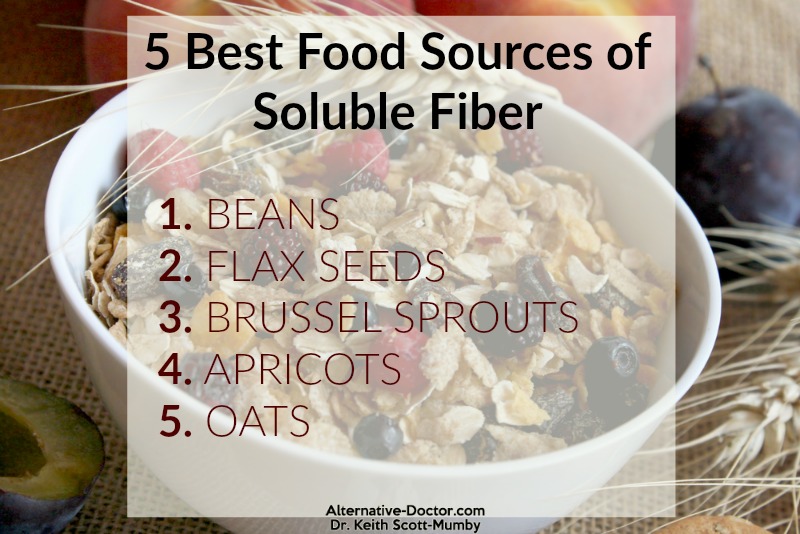You probably know about the importance of fiber in your diet, but do you know how fundamentally fiber and weight loss are linked?
While you might use scales and apps to count calories, portions, or points, one essential nutrient that’s often overlooked in the pursuit of weight loss is fiber.
What is Fiber?
Once referred to as “roughage,” fiber is a form of carbohydrate. Even though you can’t digest it, your body needs it. Any sugar content found in fiber isn’t absorbed into your bloodstream. That makes fiber non-glycemic because it doesn’t affect your glycemic levels at all.
By the time most nutrients (fats, carbohydrates, and proteins) make it to your intestines, they’re no longer intact. They’ve been broken down by your stomach enzymes. Fiber is fully intact through the entire digestive cycle (yes, all the way) and this makes it unique.

There are two types of fiber: soluble and insoluble.
- Soluble fiber (found in foods like oats, beans, apples, and carrots) dissolves in water, becoming a viscous gel that has been shown to lower cholesterol and regulate glucose levels. When you consume soluble fiber, the absorption of sugars slows down in your body and your insulin response is also slower to kick in.
- Insoluble fiber (found in foods like bran, nuts, cauliflower, and potatoes) bulks up your stool by pushing other waste materials through your intestine and out of your colon. This is crucial for toxin removal and keeping your bowels in peak condition. Insoluble fiber keeps you regular, in other words. That’s important, of course!
You need insoluble fiber in your diet but not as much as soluble fiber. Mainly because of the 100 trillion bacteria in your gut microbiome.
Soluble fiber is a prebiotic. That makes it an excellent fuel source for the beneficial gut flora found in your large intestine because it isn’t broken down or absorbed. Your microbiome then better performs its job of pushing out toxins, destroying bad bacteria, and helping you absorb vitamins and minerals more efficiently if you give it enough of this gel-like fiber fuel.
Keeping your gut flora happy and well-fed is the key to keeping systemic inflammation in check. As I’ve said many times, inflammation is the root cause (scientifically proven hundreds of times over in the last few years) of every major human disease.
Heart disease, cancer, diabetes, obesity, depression, Alzheimer’s, and so many more can be traced back to excessive inflammation. Fiber is an important part of an anti-inflammatory diet.
Fiber isn’t present in animal foods. The best sources are fruits, vegetables, grains, and legumes. A diversified diet is key to giving your body all the various components it needs to keep you running strong and healthy into oldest age.
Fiber and Weight Loss
One thing most people know about consuming a high-fiber diet is that it helps you feel fuller, longer. A meal rich in fiber takes longer to eat, is lower in calories, and moves more slowly (accomplishing more as it goes) through your digestive system.
This is one of the biggest common-sense points that should convince you to include fiber in weight loss goals because this means your body isn’t hungry as often.
When you look at a high-carbohydrate meal in comparison, it’s consumed much faster, absorbed within a couple of hours, and already into your lower intestines well before you should be eating again. Your body gets fewer nutrients, a spike in blood sugar, and your stomach feels empty two or three hours after eating. That translates to between meal snacks or another meal that’s too much and yet not enough.
The Standard American Diet is packed with simple carbs and unhealthy fats that provide few nutrients and little sustenance (satisfaction).
As a result, your system is persistently in a state of wanting.
Your body is an intricate machine. It requires specific fuels to power all the functions required from breathing, to reflexes, to digestion, to toxin removal, to healing.
A study from the University of Massachusetts found that adding just 30 grams of fiber to your daily eating plan through consumption of whole, high-fiber foods has been linked to lower blood pressure, lower cholesterol, lower blood sugar, and improved weight loss.
5 Best Food Sources of Viscous Soluble Fiber
- Beans (black, navy, and kidney are the best)
- Flax seeds (sprinkle on salads, add to shakes)
- Brussels sprouts, sweet potatoes, and asparagus
- Oranges, apples, pear, and apricots
- Oats or oat cereals (read your labels!)
Fiber is pretty easy to add to your diet and there’s no doubt that most people need more of it. If you’re concerned about weight loss, fiber is one of the easiest changes you can make to get the results you want and need.
While you’re at it, drink more water! Fiber expands with water, making it even more effective at curbing appetite, removing toxins, and keeping your bowels running well.
Fiber…eat it and learn to love it (because your body will).
The post Shed More Fat – The Importance of Fiber in Weight Loss appeared first on Dr. Keith Scott-Mumby.
